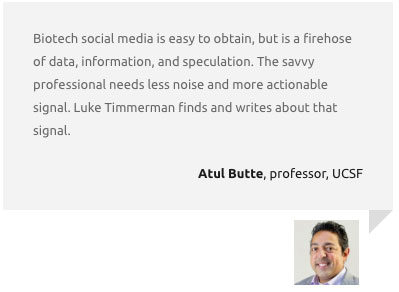What US Biotech Can Do to Meet the Moment

David Li, co-founder and CEO, Meliora Therapeutics
We have entered a new era in biotech.
Turmoil at the FDA has introduced new uncertainty. NIH funding cuts and grant delays have led to academic institutions to hold off on job offers to young scientists. The Trump Administration’s reset of trade relations with the world caused a financial market meltdown, and wild rebound.
All of these things are contributing factors making the biotech downturn longer and more intense than almost anybody imagined. The XBI biotech stock index is at its lowest point in three years.
Amidst all the gloom and uncertainty, the National Security Commission on Emerging Biotechnology, a bipartisan committee created by Congress, released a report warning of imminent danger. The US biotech industry could lose its once formidable biotechnology advantage over China, the authors write.
By now, many have commented on China’s rise in biotech (see my initial post in January), and the trend has only continued. After my guest editorial was published, another five out-licensing deals from China were announced during the JP Morgan Healthcare Conference. Large pharma is continuing to invest in China (see AstraZeneca’s newly announced $2.5 billion investment in R&D).
While the report often comes across as hawk-ish as it portrays China as dangerous and nothing but a strategic competitor, my view is that the report falls short of suggesting actions that will meaningfully change the trajectory of the US biotech industry.
Recommendations in the report include:
- Invest $15 billion over the next 5 years from the US government to unleash more private capital investment
- Treat biotech infrastructure as “critical infrastructure”
- Direct the Department of Defense to consult stakeholders for ethical use of biotechnology in the military
- Create a “Web of Biological Data” for researchers to access high-quality data,
- Direct the Office of Personnel Management to provide workforce training in biotechnology, and lastly (and perhaps most interestingly)
- Include biotechnology in the Department of State’s International Technology Security and Innovation Fund to support policy development, R&D, and secure supply chains
- Better coordinate US biotech policy across agencies through a senior advisor at the White House.
The report starts with a strong call to action but ends up severely short on details. It misses a number of foundational factors that would make US biotech more competitive.
What should be part of the national strategy?
Develop credible *financing* paths for de-risking novel platform science
Currently there is a lack of a credible funding for incremental de-risking of science.
While cost efficiency is certainly important for any startup, the pendulum in today’s market has swung too far in the risk-averse direction. In many instances, startups are expected to have first-in-human data in their first round of funding! As a response, startups are raising more capital than ever to fund all the way through clinical value inflection points if possible.
This is simply incompatible with exploration of novel biology that requires incremental de-risking.
In a more balanced, less bearish financing environment, high-risk / high-reward concepts are first tested in vitro to generate proof of concept. That then unlocks preclinical model experiments, which then unlock financing for bringing a molecule into the clinic.
One large financing round upfront to cover all these steps isn’t a prudent use of capital, and isn’t friendly for founders and management teams.
Suggestion: Address the early-stage funding gap through multiple paths
- Letting the State Department’s proposed biotech fund invest as Limited Partners of small biotech funds (<$100M) specifically funding early-stage innovation.
This pool of early-stage innovation capital could be the bridge to take startups from novel biology to clinic-ready assets. - Increase NIH/Small Business Innovation Research (SBIR) grant funding amounts and accelerate timelines from application to funding for startups.
Currently this process often takes up to 9 months or longer. That is too long for many startups. We need to find a way to unlock this resource for startups at the earliest stages when they are not yet ready with assets for the clinic.
Lower the barrier (financial, regulatory, and otherwise) to get clinical data
The currency of our land is clinical data.
It is usually the key value inflection for therapeutic assets, the key piece of evidence that persuades investors to invest. But the cost of gathering the required preclinical evidence, before even entering the clinic, is too high in the US.
The comparatively high cost of preclinical work in the US makes reaching human clinical data for a single program — let alone multiple programs — quite a high bar. Many investors now look to other countries, where it’s possible to gather the data faster, and at a lower cost, before taking the next step.
To be globally competitive, US biotechs must efficiently and expediently reach the clinical value inflection point. This is especially true as Chinese biotechs are now on the order of 5-10x cheaper and likely twice as fast. The data produced is often of a high quality, even when compared directly to US biotechs. US biotechs must confront this reality and act accordingly.
Suggestions: Strive for efficiencies through
- Establishing sensible regulations to enable US biotechs to reach efficiently and effectively human data
Learn from Australia, where IND approval timelines are a fraction of the US, and enable much faster generation of human data for new medicines. (See Daniel Getts’ article in TR, January 2025 - Letting US biotechs use every advantage available through global resources & infrastructure (including China’s!) to accelerate programs through human data
Chinese biotechs are not the only ones who can leverage an advantaged cost basis in China. US biotechs can partner with Chinese organizations to unlock incredible cost efficiencies and put them on a parallel playing field globally. This is an emerging theme that will become more prominent even as geopolitical tensions loom – simply because the potential efficiency gains are potentially so large. While this option may seem risky, not using every advantage to press forward with progress may be even more dangerous.
Finally, the US should focus on its true scientific advantage
This means doubling down on novel biology, mechanisms, and modalities, rather than only focusing on clinic ready assets derived from incrementally novel targets.
Chinese biotechs have long looked to US for true scientific innovation leadership. Many have built businesses on the fast-follower model.
That’s changing. The China biotech ecosystem is learning and evolving – and quickly. Over the last several quarters, novel targets are being funded in the early stages.
Why is this happening? China has 5,000 startups and growing. The biotechs in the China ecosystem are striving for novelty in order to establish differentiation from each other in a cutthroat competition for funding, business development attention, and more. The bleeding edge of Chinese biotech startups are now exploring more and more new targets out of necessity for survival.
However, the US still holds a comparable advantage in deconvoluting novel mechanisms, better understanding pathways for disease, applying novel pharmacology approaches and matching them with the appropriate patient populations. It is precisely in these uncharted grounds of novel biology that the US derives its significant advantage, and where China and others are still lacking.
Suggestion: Sensible funding of basic and translational sciences
The US should continue to fund basic and translational sciences via the NIH, NSF, and other government agencies. While not immediately impacting venture funding and startup creation per se, the structural advantage of being the birthplace of novel biology exploration pays compounding dividends for the US ecosystem over time. Over a long enough time period, this research investment is the ultimate driver for global competitiveness.
It’s clear that we are entering a new era for our industry. Patient demand for good medicines is unrelenting. A patient in need does not care much if the medicine comes from the US biopharma industry, or somewhere else.
The US system must evolve with the times in order to capitalize on its strengths in pioneering true innovation, otherwise risk losing its pole position in global biotech.
The runway to do so is shrinking quickly.



